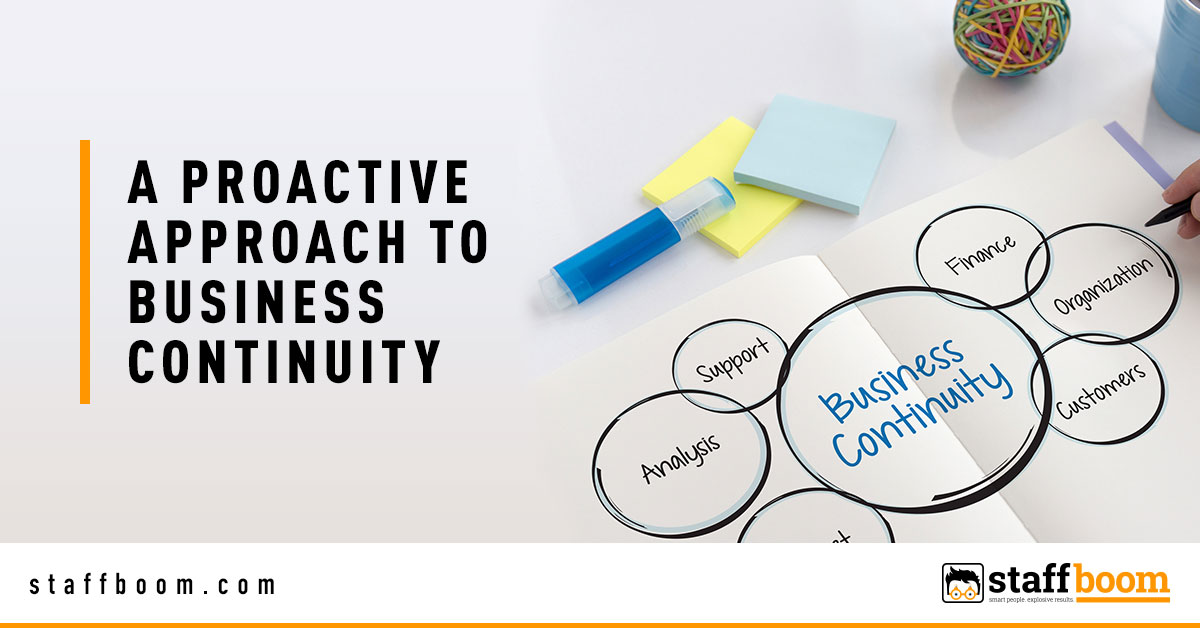
There is a rising need to address the growing complexities and threats that can undermine a business’ operations. A well planned and strategized business continuity management plan can help ensure that organizations are well prepared when a disruption occurs.
Business continuity and disaster recovery are usually seen as insurance policies against threats of natural disasters, currency disruptions, cyber-attacks and other potentially disastrous circumstances.
Both of these events are often confused with one another, but they are quite different. Business continuity and disaster recovery are two separate strategies and each plays a significant role in making sure businesses continue to operate during a disaster.
To be more exact, business continuity consists of an action plan. The plan makes sure that regular business will continue even during a disaster.
On the other hand, disaster recovery is a subset of a business continuity plan. It involves restoring vital support systems. These systems consist mostly of communications, hardware and other vital IT assets. Disaster recovery aims to minimize business downtime and focuses on getting the technical operations to normalcy in the shortest possible time.
The business continuity team implements and executes the business continuity plan. The team will determine what potential events the team will be planning for. Majority of business continuity management teams, membership may include the following:
These individuals will prepare standards for the plan, train additional team members and identify processes to ensure smooth plan execution. As a rule of thumb, the business continuity team should have at least one representative from each department.
Depending on the size of your organization, it is a good practice to add personnel on the team and distribute responsibilities accordingly.
A business impact analysis (BIA) supports the entire business continuity process. It is used to identify, quantify and qualify the impact of a loss, interruption or disruption. A BIA helps organizations identify mission-critical activities and the time frame within which they must be recovered.
Consider external factors such as the business suppliers. Plan alternatives for critical supplier dependencies.
After the BIA, the organization should mitigate risks that threaten both health and safety of employees, operations, company assets and environment by reducing the risk to an acceptable level.
Strategies may include the following:
Establish strategies for:
Conduct training for everyone in the organization with key roles and assignments in the business continuity plan. Rehearse and deploy scenarios to demonstrate business continuity.
With any type of plan, regular testing is. An outdated plan will render itself useless in times that they are needed. By testing the plans, potential flaws are discovered and fixed before they cause any significant disruption. Update the plans as necessary.
A proactive approach involves the entire business. Regardless of the size. All areas of the business need to understand the importance of business continuity, the roles they play, their involvement in the risk assessment, budgeting, planning processes and implementation.
There are no warnings before a disaster strikes. Even if businesses have already established lead times to prepare, there are still many unexpected items that come up, as disasters are unpredictable.
Business continuity is a protocol that is planned, strategized, developed and outlined ahead of time. A business’ failure to plan will cost them revenue and can possibly stain a company’s reputation.
It is important for a business to have appropriate measures in place to make sure that business operations will continue in the event of a disruption or a disaster. Outsourcing provides an option for business owners to transfer key processes in their operation to a third party. In the event a disaster strikes, your outsourcing team can continue to operate and manage some of the key operations for your company, avoiding a total work stoppage.
Final question, how well do you think your business can deal with disasters that interrupt your operation? Is it worth considering outsourcing some of your operation to have a safeguard in the event disaster strikes? Call us today and let’s discuss ways in which outsourcing can benefit your business.
